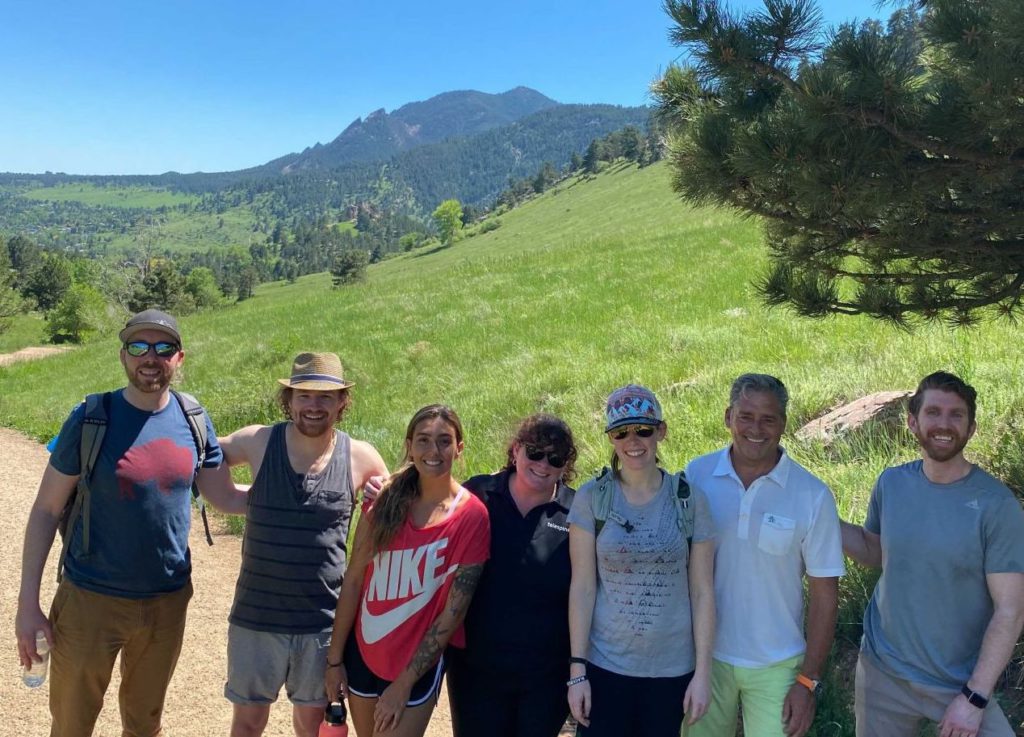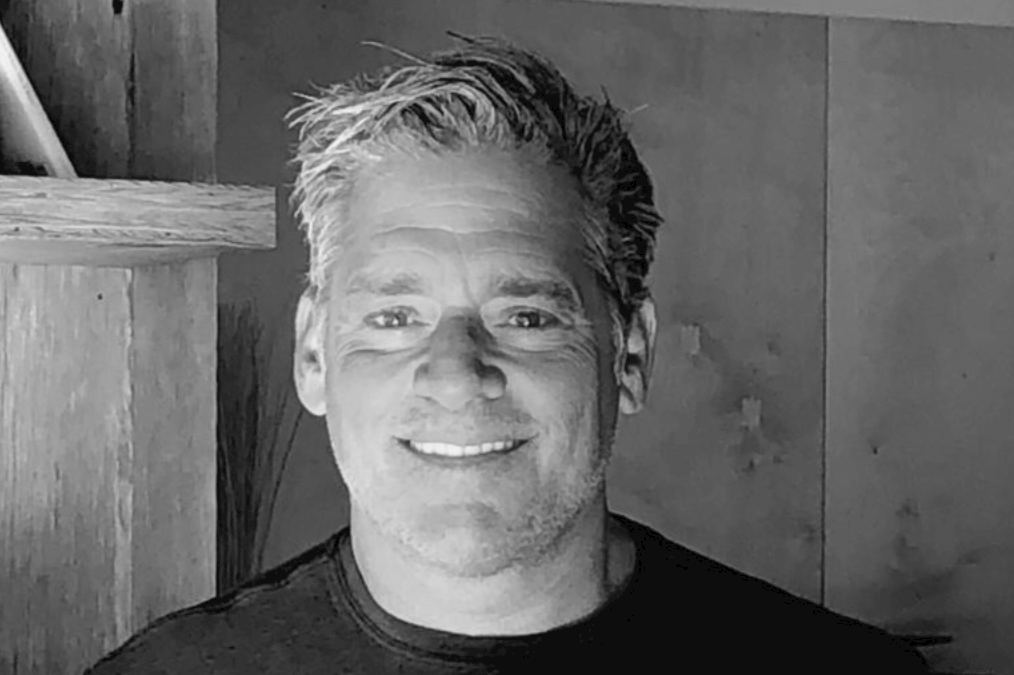Get to know Dr. Mark Barnes, the creator of Telespine, in this new interview piece. We dive into his personal and professional history, and learn what’s in store for the future of physical therapy!
What’s your background (where did you grow up, what did you do before Telespine, etc.)?
I grew up in a little college town outside of Philadelphia called Swarthmore. For college, I got a bachelor’s degree in kinesiology, did graduate work in exercise physiology, completed a 3-year master’s program in physical therapy specializing in orthopedics, and a Doctorate in Physical Therapy from Regis. I started as a clinician business owner, starting my first practice in 1993 with $2,800. I built that into three physical therapy orthopedic clinics and one large occupational medicine clinic.
From a personal growth perspective, I gravitated towards Bikram yoga. I learned from a Kriya Yoga mentor and incorporated that into my clinical approach in spine care. I was very fascinated by adapting yoga poses to treat the mechanics of neck, back, and spine pain.
My dad has also been a physical therapist for almost 60 years. He brought myofascial release into the world of physical therapy and manual therapy. Another interest of mine was publishing work on the clinical validation of how to create change in the fascial system. I spent 3 years writing the first article on the scientific basis of myofascial release in an international journal (here). I was very pleased to get that published and then incorporate that knowledge into our protocols for treating people with pain.
What are your passions and hobbies outside of Telespine?
I’m an avid mountain biker, snowboarder, and surfer. I live in the mountains and by the ocean. I’m lucky I can work from anywhere.

What was the light bulb moment for you where you knew this career was what you were meant to be doing?
That’s a good one. There were a couple of lightbulb moments that built upon each other. The first one was curiosity and fascination with exercise science and sports performance. I started to think about how biological systems work together and how we’re a multisystem being that has to be working in harmony and in balance. That was my first lightbulb moment, realizing I’m interested in a multisystem science approach to health and wellness.
My next lightbulb moment was going to physical therapy school and becoming interested in how we break down as human beings in terms of function and movement. And then putting the pieces back together to solve the problem. The lightbulb moment was really an understanding of how much I liked hypothesis testing and figuring out the puzzle.
The next lightbulb moment came in my doctorate when my interest in yoga transformed into creating a therapeutic approach to helping the aging adult by adapting classic yoga into a more therapeutic approach in a clinical setting. How to achieve this was also a puzzle, and I wanted to solve that puzzle. I was interested in the evidence and the physiologic and mechanical relationships that supported this approach. At the same time, I was getting my doctorate so I chose to study aging and what leads to decline from a musculoskeletal perspective. So I chose my thesis to be “A Yoga-based Approach for the Aging Adult.” I subsequently created a new yoga-based program to combat the effects of aging, called Golden Yoga, then commercialized it.
Honestly, the aha moment with yoga and me was that I was my own patient recovering from back surgery. When I first started doing yoga, it hurt my back. At the same time, I was teaching core stability to my patients with back pain. So then I thought “why shouldn’t we combine core stability, staying long and tall, and decompressing your spine while doing yoga poses?” I wasn’t being taught that or doing it during yoga. So I applied it to my own yoga, and that was the aha moment. I started thinking about how to take classic yoga and make it more clinical and therapeutic with patients.
What’s the best lesson you learned that made you a better physical therapist?
It’s not really a lesson, but what made me the therapist that I am today was my education and mentors. I had two very influential mentors, my father being the main one, and then the director of my master’s program, Dr. Walter Personius. They taught me how to think critically, communicate with patients, and problem solve. More specifically, how to address the cause of the conditions we treat, not just simply treat symptoms, and how to address the whole patient.
The next piece of it was having treated thousands of patients. There’s not one lesson, but every patient was a lesson.
On the business side of it, a lack of experience was overcome by tenacity and thick skin. I didn’t know anything. I had the drive and needed to start the first business with nothing–it had to work out so I just had to figure it out daily.
What makes your business stand out from others?
I figured out early how to differentiate my practices from others. Innovation and differentiation were driven by not only wanting to get patients better but teaching them lifelong skills. We were the first Boulder physical therapy practice to incorporate yoga as a part of our physical therapy approach. Then the first to introduce pilates into our programs and, of course, myofascial release. We were getting better results than other practices and developed a great reputation because of our approach to treating the whole person. The next big differentiation was that we created the first orthopedic telehealth solution in the marketplace, way before telehealth was recognized as viable. We proved that incorporating telehealth into our clinical approach helped patients get better faster.
Regarding Telespine, soon to be Orbit, putting coaching first is what really sets us apart. The relationship building that happens and the behavioral change model that we’ve incorporated from Dr. Mark Aloia is a big one for us.

Tell me about Telespine’s mission and core values. What do they mean to you and your team?
Ultimately our mission is to help people in pain. The way that we do that is to approach people with the understanding that they are human beings and they are complicated. It’s not just one thing, they have thoughts, they have feelings, they have motivations, they have life going on around them. We need to approach them in a way that is caring and respectful, and also understand that simplicity is a lot more impactful than complexity. If we can give them the 2, 3, maybe 4 things that they can learn as lifelong skills that are unique for them and their needs and conditions, and how they approach the world, then we have done our job. They will be able to become their own best agent of change if we enable them.
Our core values are respect, kindness, empathy, and taking a whole-person approach to musculoskeletal conditions.
On the business side, our partnerships are the conduit by which we can create change, not just with the individual, but help reduce astronomical healthcare spending. The spending on musculoskeletal care is unnecessary. If we’re able to enable patients and give them support and help them become their best advocates for change, then their spending within the healthcare system goes down. We’ve been able to show that our customers and partners all win. We have a lot of assets to share, and if we can combine them with our partners, we can have a big impact on our customers. We pick partners, like Teladoc Health, that we are best aligned with to accomplish that end goal.
What’s in store for the future of your company? Where do you see it in 5 years?
Telespine is re-launching as Orbit Telehealth in a few weeks where we go back to our roots to provide virtual care for not only neck and back pain, but also hip, knee, and shoulder pain. Ultimately, we operate best as an important puzzle piece of a greater whole. We’ll continue to be fully embedded with our partners to enable a strong care continuum as the MSK telehealth piece of that continuum. We have always led innovation in virtual MSK treatment and, with the right partnerships, we’ll be able to do that even more.
